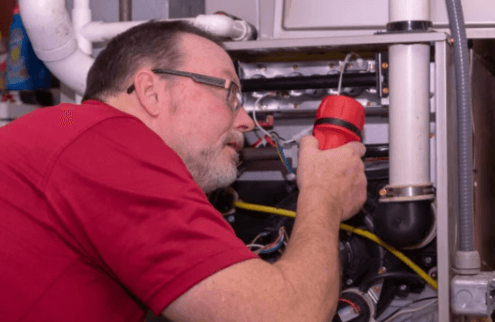As winter approaches, it becomes necessary to ensure that your HVAC system operates at peak condition. The last thing you want is to wake up in the middle of the night because your teeth are chattering as a result of how cold your house has become. The majority of households across North America rely on a furnace to provide heat during winter. It simply distributes warm air to multiple rooms through ducts and air registers. Several options exist, such as an electric furnace, gas, or fuel.
Costs of a New Electric Furnace
Several factors can affect the costs of a furnace replacement. On average, it will set homeowners back anything from $1,800 to $7,000. Learning about these costs can be tricky but doing your due diligence means you will be 100% confident when you finally decide which electric furnace you want to install. The model and type of furnace are the primary factors that dictate the overall costs. You should expect to pay $2,000 for a new electric furnace while gas options are slighting more costly. However, you may discover options that are more affordable, ranging from around $700.
Installation Costs
Furnaces aren’t difficult to install, generally. Electric furnaces simply require a connection to your home’s electrical grid. Once again, the total cost of setting up your new furnace will depend on a range of factors. The unit size, brand, and other external elements will influence the overall installation cost. However, you can expect to pay anything between $2,500 and $6,000, with the average cost being around $4,000.
Electric Furnace Operating Efficiency
Every homeowner must take into consideration the operating costs of their HVAC system. Whether you select gas or electric furnace, it will have costs associated with its daily operation. Efficiency is measured through the amount of useful heat produced per unit of input energy, whether that’s gas or electricity.
Across the United States, the efficiency of furnaces is regulated by minimum AFUE (Annual Fuel Utilization Efficiency). This figure takes into consideration seasonal efficiency, part-load situations, and average peak. Additionally, it accounts for starting up and cooling down alongside an estimation of the electricity that the inducer fan, air handler, and controls consume. You should think of AFUE in the context of your car’s gas mileage; the higher the number, the more efficient the system is in terms of energy consumption.
Lifespan
Since installing an electric furnace is an investment into your property, you should be aware if it delivers a decent return. The good news is, electric furnaces are the best in terms of providing you with a service for a more extended period. To draw a comparison to gas furnaces, these may only last around 15 years if you’ve followed the necessary maintenance schedules.
However, the electric options can go up to 30 years, and while that’s not a guarantee, you can ensure that it gets close enough through regular maintenance. Bear in mind that gas furnaces require more intricate servicing since it contains gas pipes throughout the system, where the technician will inspect for possible leaks.
Safety
This brings us to the next point of electric furnaces being the safer option. Gas and carbon monoxide leaks are a real possibility with gas furnaces which you won’t have to worry about with an electric furnace.
The Ideal Home
You shouldn’t think twice about installing an electric furnace in your home if the property is in a temperate climate where you don’t experience the worst of winter. If you’re not going to rely on the furnace as much, the electric option is the perfect one for you. Estimate your average use, and you’ll conclude that in the long term, an electric furnace is the only solution.
Other Factors Affecting Electric Furnace Costs
The size of the furnace is a crucial factor that contributes to its overall price. Naturally, the larger the furnace, the more you’d have to pay. To avoid acquiring a system that’s larger than what you require, have an HVAC technician perform a load test to determine the ideal size.
The energy source is another consideration to make, but it’s clear that electric furnaces are the cheapest option.
There are several popular furnace brands across America. Some manufacturers may demand a certain price tag but deliver on quality. It’s imperative to weigh up your options in this regard and avoid settling for an unknown brand where replacement parts may be an issue and breakdowns a common occurrence.
Selecting an Electric Furnace
Now, you’re aware of the benefits you can enjoy with an electric furnace. However, instead of going through the process alone, you should speak to a reliable HVAC contractor who can conduct the necessary tests and provide you with sound advice. Bear in mind the decision you make about your furnace will be a lasting one, so it’s worth discussing it with a professional.

